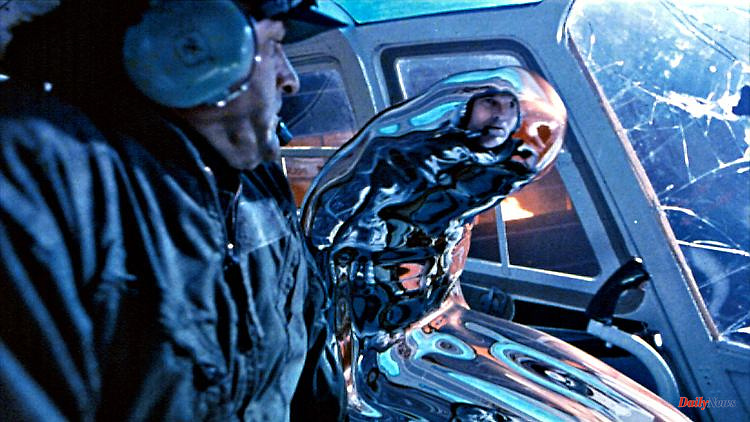A mini-robot made of a new material can liquefy - and eventually regain its old form. It is reminiscent of the famous villain from "Terminator 2". But unlike there, the new development should help people.
In 1991, a liquid robot caused enthusiasm among cinema audiences: In the film "Terminator 2 - Judgment Day", the villain is a man-hunting machine made of special metal that can liquefy if necessary and then return to its original form. Even bars cannot stop this super robot called "T-1000", in case of doubt it simply flows through them.
Now, 30 years later, this shape-shifting robot appears to have become a reality. A little at least. An international research team has built a tiny robot out of a material with similar wondrous abilities. MPTM (Magnetoactive Phase Change Matter) consists of magnetic microparticles embedded in gallium. This metal has a very low melting point of just under 30 degrees. The researchers published the result in the specialist journal "Matter".
The great thing is that your robot can also practically melt on command and later regain its original shape by cooling down. The researchers demonstrate this very vividly with a simulated attempt to break out of a small cage: a video shows how the figure in the form of a Lego man liquefies and is steered through the bars in this state. Resurrection from a lump of metal follows shortly thereafter. Just on the other side of the grid.
The secret of the miracle material are the magnetic particles in gallium. These have two tasks, explains lead author Carmel Majidi from Carnegie Mellon University. "One is that they make the material receptive to an alternating magnetic field, so you can heat it up by induction and bring about the phase change." And secondly, the magnetic particles gave the robots their mobility - their movements can be controlled with a magnetic field.
However, this is also the decisive difference to the T-1000 in the "Terminator" film: The robot from the study needs an external induction coil to melt the material and thus move forward. The film robot, however, could do all this by itself.
Nevertheless, the researchers' approach could help solve an old problem: While conventional robots are hard and stiff, soft robots have greater flexibility, but are weak and their movements are difficult to control. "Giving robots the ability to switch between liquid and solid states gives them more functionality," said study leader Chengfeng Pan, an engineer at the Chinese University of Hong Kong, according to a statement.
With their study, the researchers initially only want to prove the performance of the new material. In another video, they show how two of the robots work together to move objects, for example. In another experiment, a cube-shaped metal robot removes foreign objects from a model of a stomach or administers medication. 'MPTMs show promise for future applications in flexible electronics, healthcare and robotics,' the study states.
But Majidi also emphasizes that the research is still in its infancy. "What we show here are just one-off demonstrations, proofs of concept." A lot of research is still needed before a sometimes solid, sometimes liquid robot can actually administer medication to human patients.
Brad Nelson, Professor of Robotics at ETH Zurich, who was not involved in the study, emphasized to the "Washington Post" that the material used in the experiments could also be problematic for medical applications: Because it contains neodymium-iron Boron, which is toxic to humans. This robot is therefore only clinically safe for use in humans "if it is then completely removed from the body," says Nelson.
(This article was first published on Friday, January 27, 2023.)












